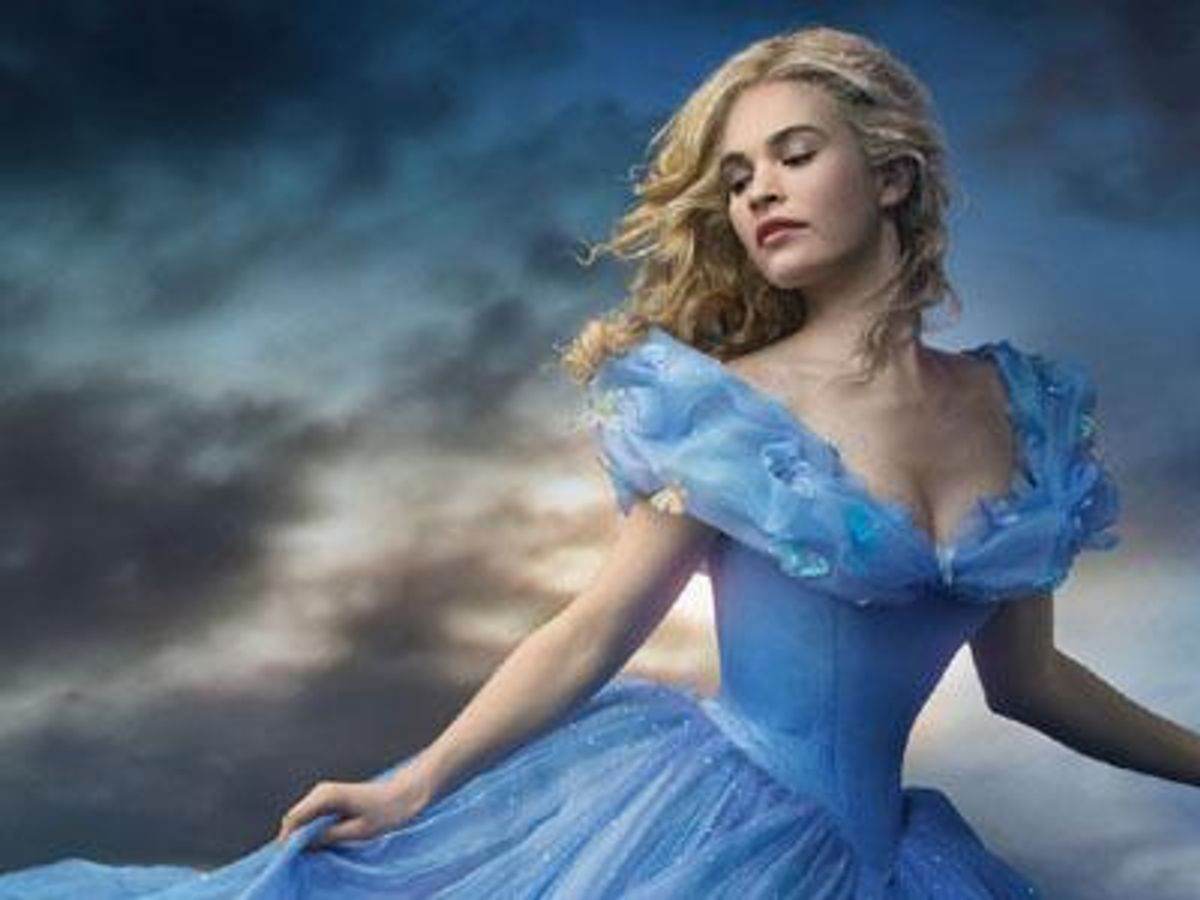There are many reasons why Cinderella is the most popular and universal fairy tale of all time. Every culture has its own version of the tale, with the earliest recorded one dating back to Greece in the 1st century B.C. And anyone who has ever been a child can identify with Cinderella's feelings of being persecuted by an antagonistic parent figure and siblings, longing for the day when their true worth is recognized and rewarded.
But queer viewers have long had an affinity for the "it gets better" ethos of the Cinderella story and its fairy godmother. Today's tale isn't exactly Disney's 1950 animated version, and the new film (starring Downton Abbey's Lily James as Cinderella and Game of Thrones'Richard Madden as the Prince) emphasizes familiar elements of the plot that especially resonate with a queer audience.
It begins with the girl's idyllic childhood, when anything seems possible. Everything is fine until adolescence kicks in -- isn't that always the way? -- and then things get more complicated, and painful.


With the arrival of Cinderella's stepmother (a glamorously wicked Cate Blanchett) and stepsisters, our heroine is singled out as different and inferior to her stepsisters. Of course, Cinderella is banished to the attic -- which may feel a lot like a "closet" to queer teens in search of an allegory.
Some of us are lucky to have immediately accepting parents. But others of us are more like Cinderella, and when our parents discover that queer something about their child, the love that they'd shown may be darkly shaded by disapproval. Cinderella's stepmother throws jealousy of the girl's youth and beauty into the toxic mix.
The primary question at the heart of the tale is, How can Cinderella escape this degradation, this closet, this prison among the ashes? As many queer people realize, the answer seems to lie in taking on a new identity.
The new Cinderella adds a pivotal scene in which she meets the Prince for the first time while riding in the forest (where everything important seems to happen in fairy tales). They both conceal their true identities and, within the safety of their false identities, discover a powerful connection.
As is the case with many young queer women and men, the fearful question that confronts both Cinderella and the Prince is, What would this person do if he or she knew the real me?
Queer viewers can certainly identify with the tale's core theme of true identity being concealed and then revealed. This is especially powerful in the climactic moment when Cinderella summons the courage to present her true self to the Prince.
And of course the shoe fits. And she wears it.




 With the arrival of Cinderella's stepmother (a glamorously wicked Cate Blanchett) and stepsisters, our heroine is singled out as different and inferior to her stepsisters. Of course, Cinderella is banished to the attic -- which may feel a lot like a "closet" to queer teens in search of an allegory.
With the arrival of Cinderella's stepmother (a glamorously wicked Cate Blanchett) and stepsisters, our heroine is singled out as different and inferior to her stepsisters. Of course, Cinderella is banished to the attic -- which may feel a lot like a "closet" to queer teens in search of an allegory.